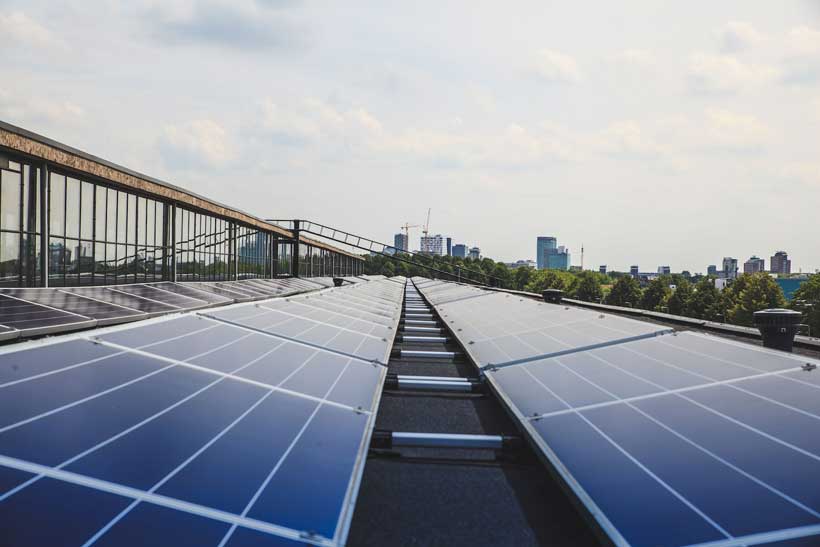Energy is at the core of development. Energy makes investments, discoveries and new areas of the economy that promote justifiably growth and employment which generate a shared prosperity on this cleaner Earth possible. However 2.1 billion people still depend on traditional fuels and technologies worldwide while 685 million globally do not have access to electricity.
Energy policies are guidelines, regulations or targets set by Governments, organizations or individuals to govern energy production, distribution and use in their jurisdiction. To meet rising demand for energy, support economic growth and create jobs in developing countries, the World Bank’s Energy Policy seeks to diversify and clean up energy supplies. Additionally, renewable energy sources as well as increased utilization of power can help mitigate climate change by slowing down global warming.
On June 28th 2016 the Executive Board of Directors of the World Bank approved a loan of $1.5bn funding towards another project aimed at helping India fast track its move over to low-emission technology (World Bank Approves $1.5bn Loan for Second Low, Carbon Project in India). Also, it will support a cut of 50m tone’s each year in carbon emission levels as well as enable more renewable power capacity. The operation will also help to expand the nation’s carbon credit market.
Indian economy is expected to continue expanding at a high rate, thus becoming the largest economy globally with the highest increase in the rates. Decoupling economic growth from emissions escalation will require more renewable energy use, especially in hard-to-reform industrial sectors. This implies that more money is available for low-carbon development and as such there should be increased production and consumption of green hydrogen as well as faster climate finance evolution. The initiative aims to promote the growth of a thriving green hydrogen market, furthering the expansion of renewable energy sources and encouraging funding for low-carbon development projects. The World Bank is contented to lend its weight behind India’s low-carbon development plan so long as it helps achieve India’s net-zero goal and creates green private sector jobs.
One of the key targets for both operation one and two is increased private investment into green hydrogen as well as renewable energy. It is foreseen that the improvements backed by the operations will enable an electrolyzer capacity of 1500 MW per annum and production of not less than 450,000 metric tons of green hydrogen beginning in FY25/26. The latter would also be instrumental in achieving the country’s target of reducing GHG emissions by 50 million metric tons annually as well as expanding renewable energy sources. This project is also connected with efforts to develop a carbon credit market in the country. India has made bold strides to create an internal demand for green hydrogen buoyed by expeditiously expanding renewability potential. It has drawn massive private sector interest during the initial tenders through its incentive program under National Green Hydrogen Mission.” Finally, through this operation, investments in infrastructure for renewable energy sources and green hydrogen have increased.
This will help India on its path to fulfilling its targets for nationally determined contributions. This initiative supports both the Bank’s Hydrogen for Development (H4D) Partnership and the energy security of the Government of India. The International Development Association (IDA) has provided $31.5 million in credit, while the International Bank for Reconstruction and Development (IBRD) has loaned $1.46 billion to fund the operation.
The second of two planned operations of a similar scale will support reforms aimed at increasing the production of green hydrogen and electrolyzers, which are essential pieces of equipment required for the creation of green hydrogen. The operation also supports changes to the Indian Electricity System Code to improve the integration of renewable energy sources into the system and to incentivize the use of battery energy storage solutions. The $1.5 five billion dollar First Low-Carbon Energy Programmatic Development Policy Operation was approved by the World Bank in June, 2023. , supported the abolishment of transmission tariffs on renewable electricity in green hydrogen projects; the release of the actionable roadmap for the yearly procurement of 50 GW of RE facility tenders; and a framework for beginning the national carbon credential market.
The first and second operations have the clear objective to boost private capital investment in renewable energy and green hydrogen. The World Bank loan is quite crucial for the development of the energy industry by financing wind and solar power projects, reducing India’s reliance on conventional energy resources and managing the emission of greenhouse gases.
In addition to advocating energy utilization in the structures and industry, it comply with the renewable energy and energy saving policies of the World Bank. Further, by building up the infrastructure as well as the storage of the grid, the loan also enhances the energy security as well as energy reliability, which is a necessity for growth in any country. Thus, by reducing greenhouse gas emissions, enhancing the availability and accessibility of clean energy, and promoting economic development and employment of individuals, particularly in the renewable energy sector, it positively affects India’s energy sector and supports resilience and sustainable development.
Considering the low-carbon transition of the country, it is possible to state that it refers to the necessity of India’s loan in the World Bank for the further promotion of the improvement of sustainable infrastructure, energy efficiency, and renewable sources. To the countries aspiring to adopt a new effective energy type, global finances are vital because without them, they are unlikely to launch large-scale activities. It helps in overcoming the technological and financial barriers for bringing about huge changes in reduction of carbon emissions and its impact on climate. This underlines the importance of cooperation with other countries on climate change issues and on development of sustainable energy agenda.

Leave a Reply